All products featured are independently chosen by us. However, SoundGuys may receive a commission on orders placed through its retail links. See our ethics statement.
Apple AirPods Pro (1st generation) vs Sony WF-1000XM4
July 9, 2024
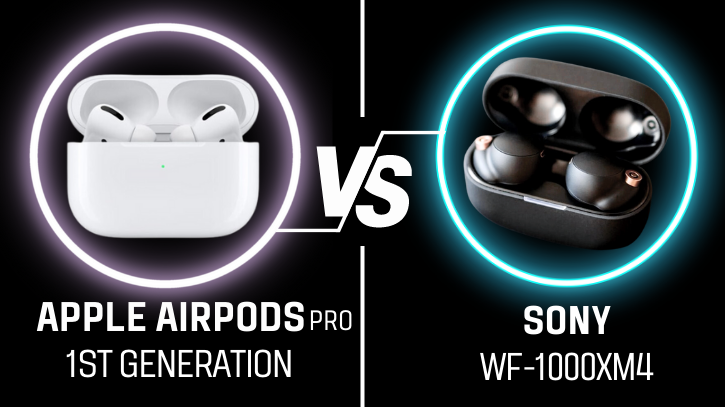
Apple understands the value of carving out a path of least resistance for its customers and presents an ecosystem of interconnected devices. The ease with which anyone can operate the Apple AirPods Pro (1st generation) with an iPhone draws countless people in. Few true wireless earbuds have been able to divert attention away from the AirPods, but the Sony WF-1000XM4 makes a strong case for your dollar. Sony’s active noise canceling (ANC) is superior to Apple’s, but is that enough to draw us moths away from Apple’s flame? That’s what we’ll find out in this Apple AirPods Pro (1st generation) vs Sony WF-1000XM4 head-to-head.
To see comparisons of the more recent models from Apple and Sony, make sure to check out our Apple AirPods Pro (2nd generation) vs Sony WF-1000XM4 article as well as our Apple AirPods Pro (2nd generation) vs Sony WF-1000XM5 article.
Editors note: This article was updated on July 9, 2024, to include reference to our comparisons of new Apple and Sony earbud models, as well as update the sound quality section with new testing metrics.
Apple AirPods Pro (1st generation) vs Sony WF-1000XM4: Which earbuds have a better design?
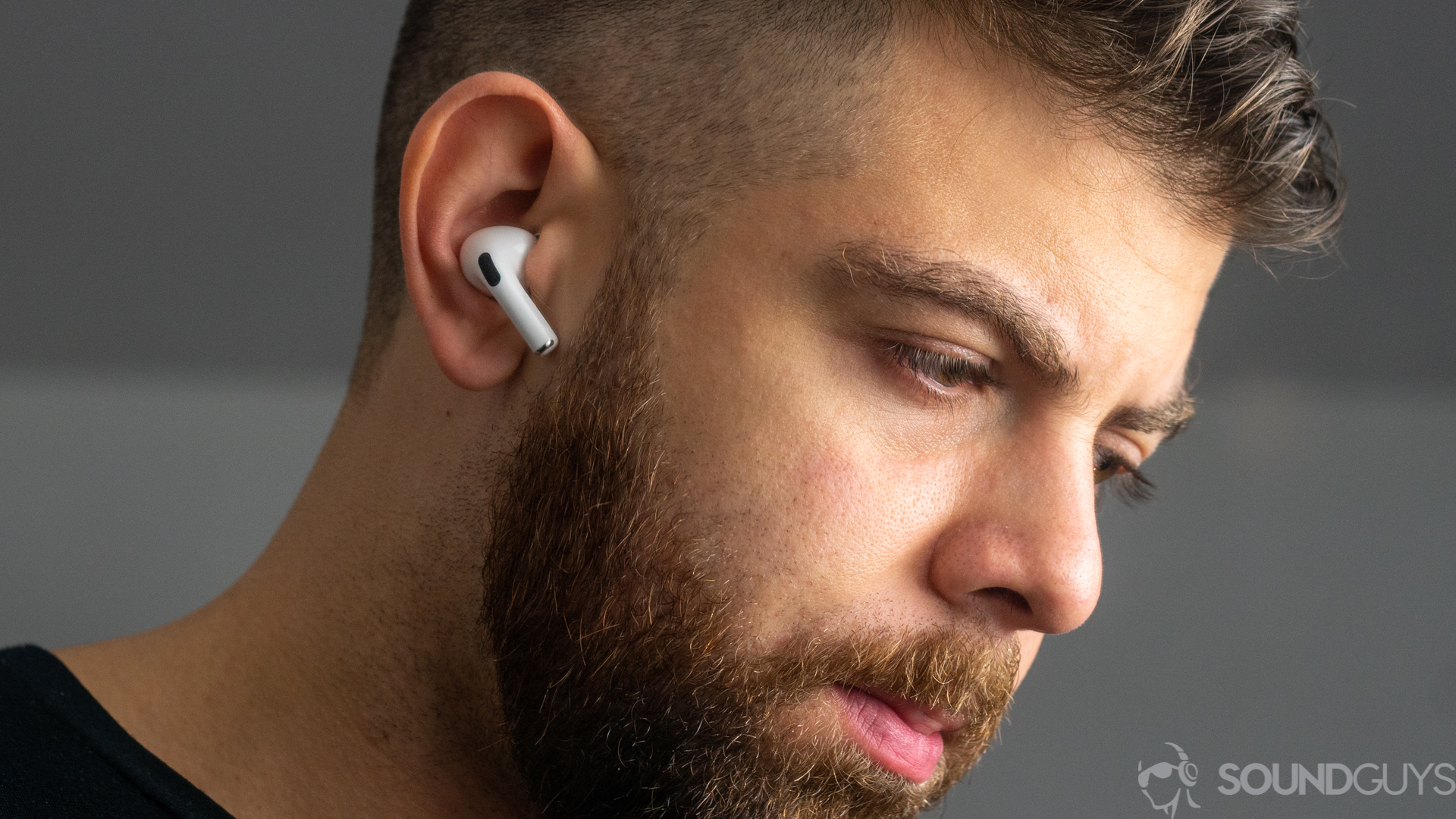
Apple’s white, glossy earbuds proudly sport angled stems, and their simplicity defines them as culturally iconic. Whether you love or hate the look of sticks descending from your ear canals, they benefit the clumsy, offering something to grip when removing and inserting the buds. There are downsides to this design, though. The stems often get caught on a mask or towel, hurtling the earphones toward the floor. A small oblong imprint on each stem indicates its pressure-sensitive control area. Apple provides three pairs of silicone ear tips, and you can pick up a pair of memory foam replacements for a better seal.
Sony keeps things simple with its black/copper or white/copper color variants and more traditional stemless earbud design. This gives the earbuds a more discreet footprint and gives you a larger surface area to operate the touch controls. The earbud housings curve with the contours of the human ear, making them a comfortable option for most ear shapes.
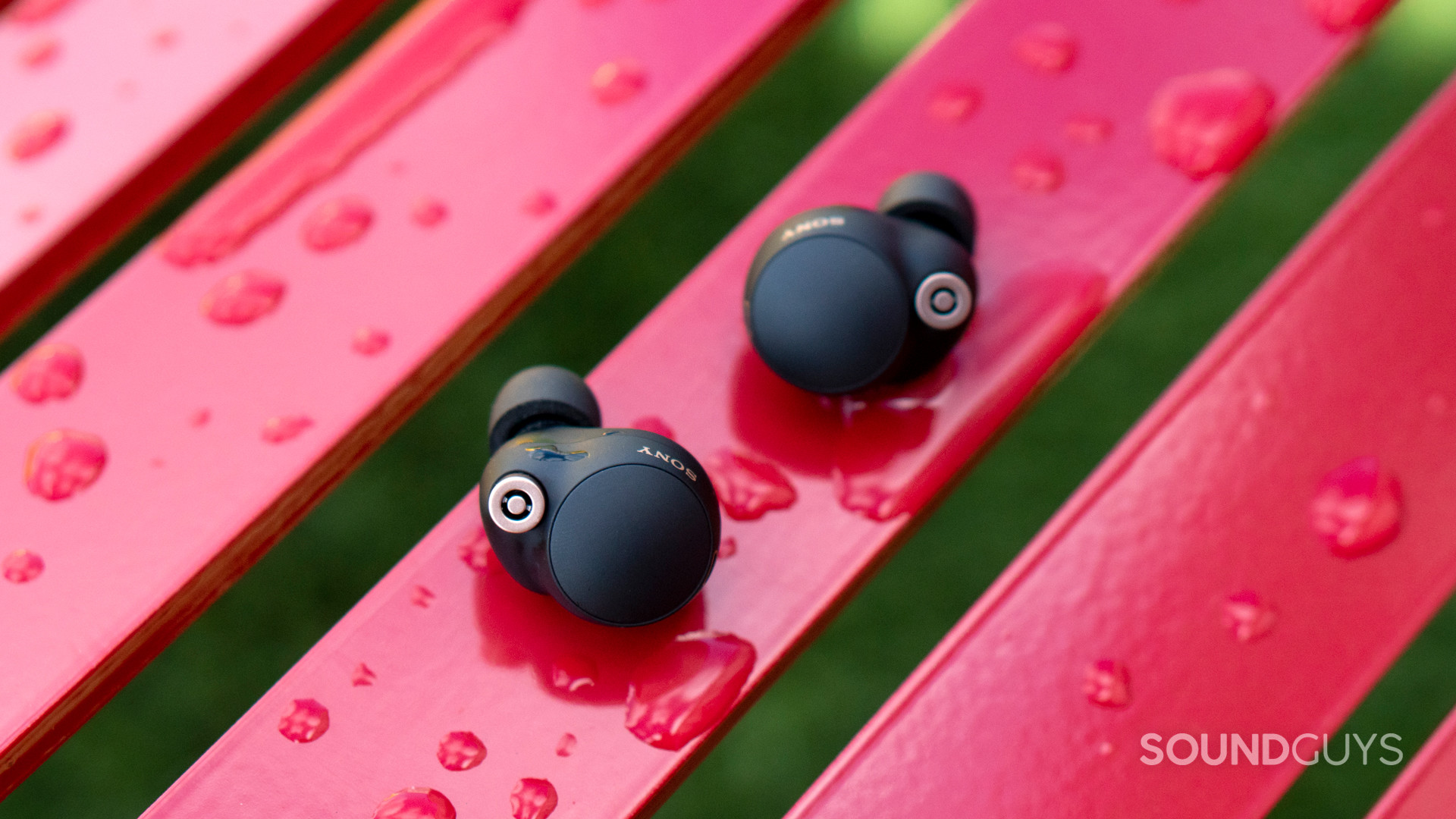
The Sony WF-1000XM4 include three pairs of memory foam ear tips (small, medium, and large), which makes them more comfortable and stable than the AirPods Pro. Both sets of noise canceling earbuds have an IPX4 rating, so athletes can exercise no problem. You may need to replace the Sony ear tips before the AirPods Pro’s because memory foam wears down faster than silicone. Sony and Apple integrated pressure relief vents into their earbuds, reducing that uncomfortable suction sensation when noise canceling is enabled.
Both cases stand horizontally and support wireless charging. The difference lies in the charging input: the AirPods Pro case requires a Lightning cable, while the Sony WF-1000XM4 case requires a USB-C cable for wired charging. The cases are pocketable, and neither boasts any kind of IP durability rating.
Apple AirPods Pro (1st generation) vs Sony WF-1000XM4: How do you control the earbuds?
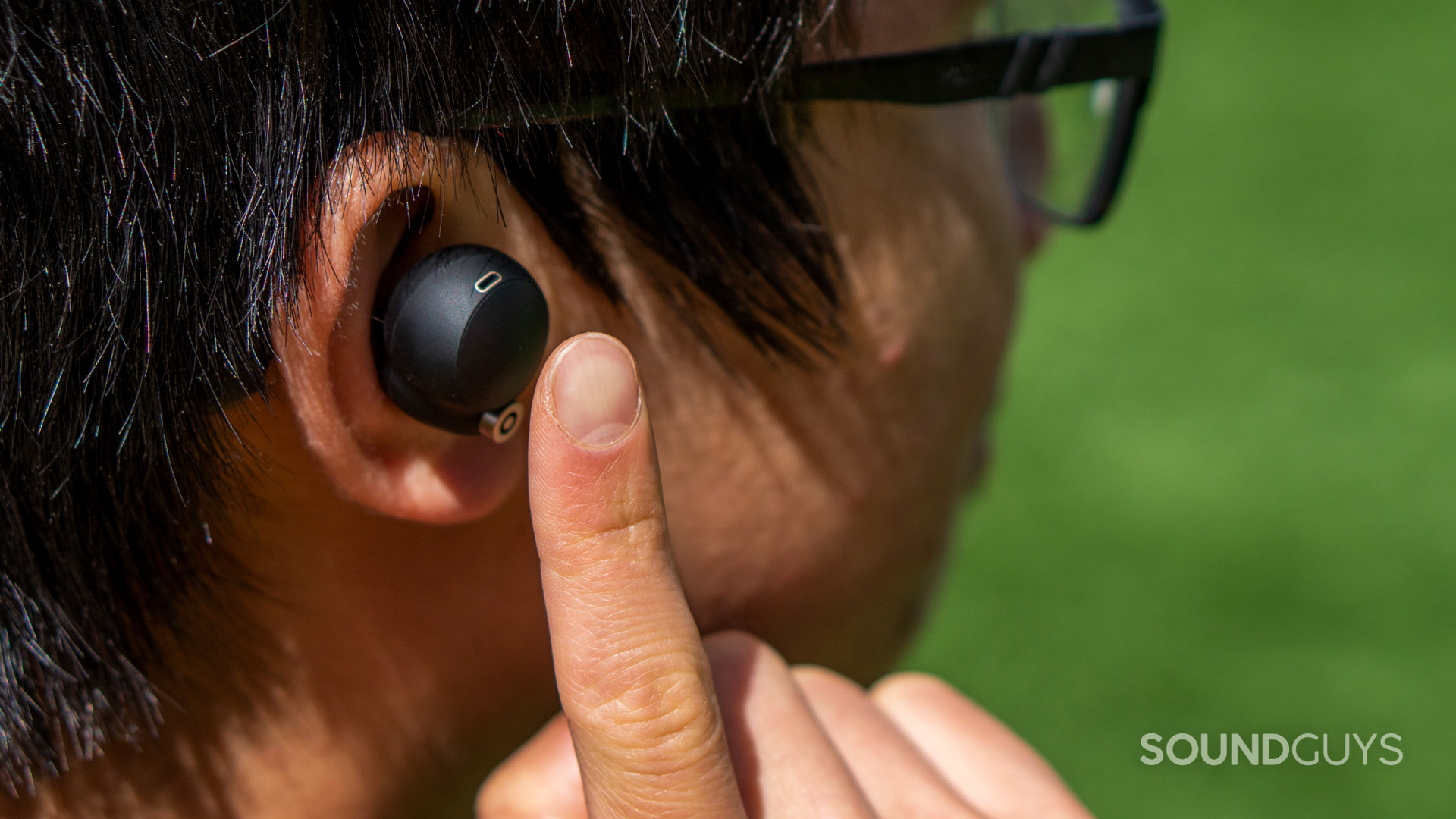
While you can whip out your phone to control playback and field calls, both headsets support remappable touch controls and automatic ear detection for auto-pause/play functionality. For the latter, the AirPods Pro requires an iPhone.
Apple AirPods Pro (1st generation) controls:
| INPUT (stems) | ACTION |
|---|---|
One press | Play/pause/answer call |
Two presses | Next track |
Three presses | Previous track |
Press and hold | Toggle ANC/Adaptive Transparency modes |
"Hey Siri" | Change volume, request directions, playback control, receive messages, and more |
Sony WF-1000XM4 controls:
| INPUT | ACTION (left bud) | ACTION (right bud) |
|---|---|---|
| INPUT ONE TAP | ACTION (left bud) Mute/ANC/Ambient sound | ACTION (right bud) Play/Pause |
| INPUT TWO TAPS | ACTION (left bud) N/A | ACTION (right bud) Track forward/answer call |
| INPUT THREE TAPS | ACTION (left bud) N/A | ACTION (right bud) Track backward |
| INPUT TAP AND HOLD | ACTION (left bud) N/A | ACTION (right bud) Smart assistant |
Anyone with an iOS or iPadOS device can reconfigure the AirPods Pro gesture and touch controls from the Settings app. Android devices can’t do this with the AirPods Pro, leaving you beholden to the default controls. This is a theme with Apple hardware: it doesn’t play kindly with non-Apple products. (You can download the Assistant Trigger app on Android to access Google Assistant and enable automatic wear detection.)
Unlike Apple, Sony makes its software available on all platforms
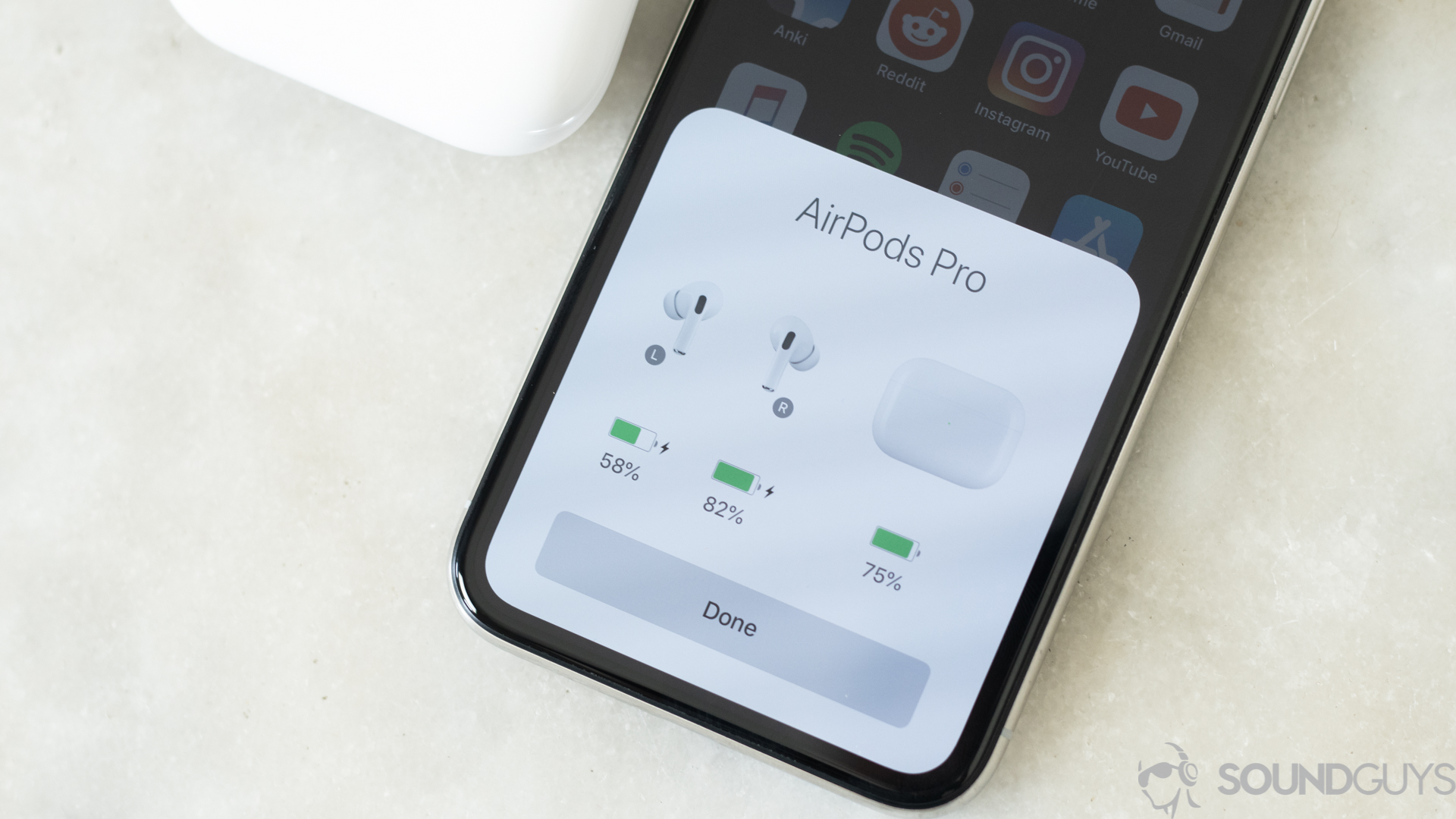
The Sony Headphones Connect app is freely available on the Google Play Store and Apple App Store, so the experience is uniform regardless of your OS. When you download Sony’s app you’re greeted with various customization options. You can use the multi-band equalizer to tailor the Sony WF-1000XM4’s sound to your liking, toggle between Ambient Sound and noise canceling modes, view battery status for each earbud and the case, remap controls, select your preferred voice assistant, and more.
Most importantly, you can take the ear tip fit test to ensure you’ve installed the correctly sized ear tips. This is imperative for noise canceling earphones—it optimizes passive isolation, which is required for the best possible active noise cancelation.
If you have Android and iOS devices in your life, you'll have a better time using the Sony WF-1000XM4 than the AirPods Pro.
Sony’s buds also support Google Fast Pair, so you can immediately pair the WF-1000XM4 to your compatible Android devices and locate them with a loud ring or check their last known location through your phone. These buds also support Swift Pair for any Windows 10 device.
When you pair the Apple AirPods Pro (1st generation) to an iPhone, you get access to a host of features like Find My AirPods, hands-free “Hey Siri,” battery optimization, Adaptive EQ, and Spatial Audio (Apple’s take on object-based surround sound), to rattle off the highlights. Anyone who owns multiple Apple source devices will revel in the immediate benefit of automatic device switching (requires a unified iCloud account). A simple feature Apple has yet to add to its repertoire is a custom EQ module, something that Sony and others are quick to provide.
Again, Apple makes its software features exclusive to its hardware. Even basic things like AirPods Pro software and firmware updates require an iPhone or iPad.
The Sony WF-1000XM4 support Sony 360 Reality Audio, available on Tidal, Deezer, and Amazon Music HD. Apple Spatial Audio works on Apple Music and with Dolby Atmos content when streamed from a compatible Apple device.
Do the AirPods Pro (1st generation) or Sony WF-1000XM4 support better Bluetooth codecs?
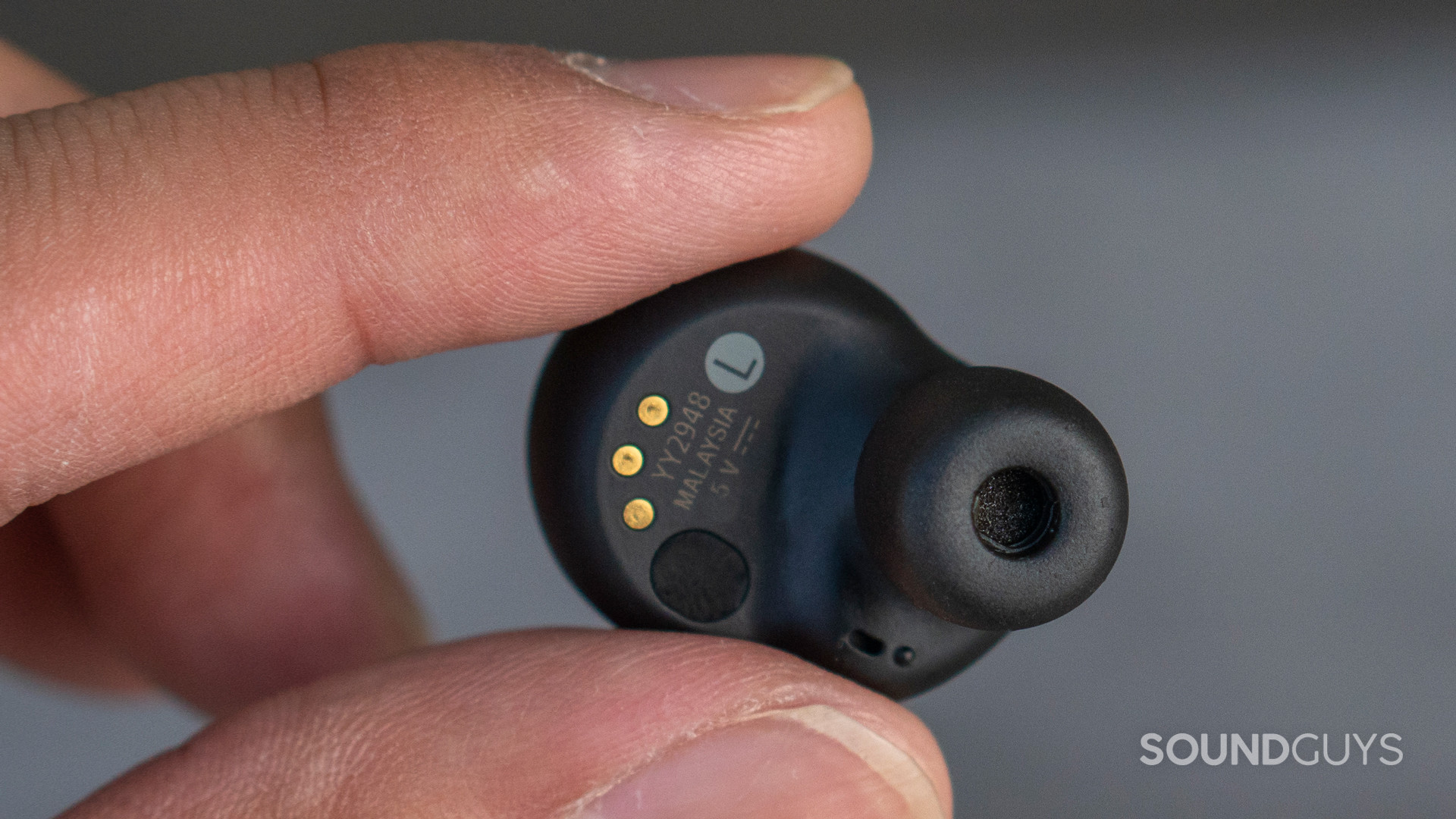
The Sony WF-1000XM4 support more Bluetooth codecs than the AirPods Pro. With Sony, you can choose between SBC, AAC, and LDAC for high-quality streaming on Android and iOS devices. You can choose to prioritize sound quality or connection stability from the Headphones Connect app. The AirPods Pro serve you the standard SBC or AAC binary.
The Apple AirPods Pro use Bluetooth 5.0, which is good for power efficiency, though the Sony WF-1000XM4 steal the show again with Bluetooth 5.2 support. If your smartphone supports this Bluetooth version, you’ll experience long battery life and, down the road, might be among the first with access to LE Audio.
The Sony WF-1000XM4 have better battery life than the AirPods Pro (1st generation)
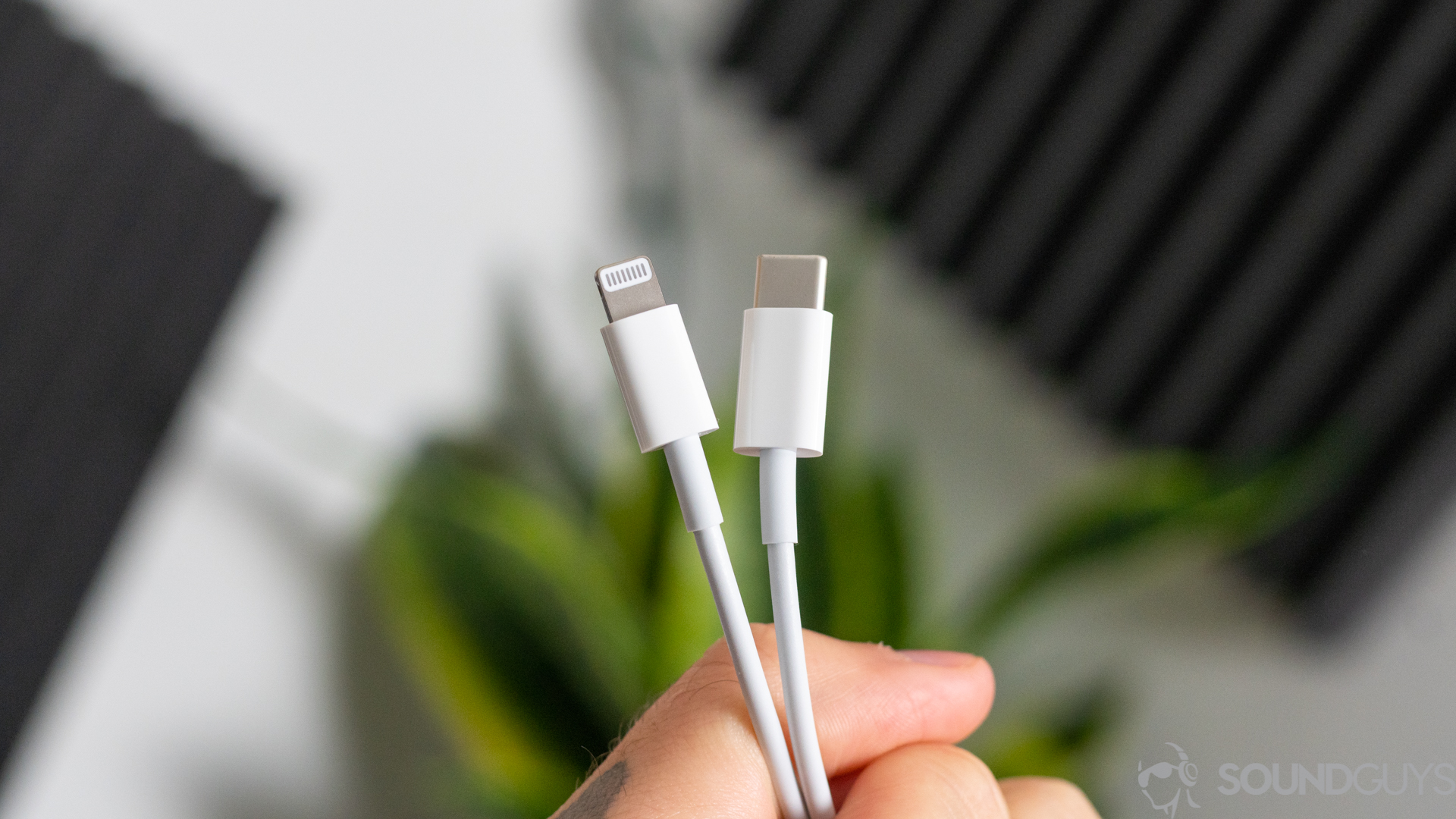
When connected to an iOS device, the AirPods Pro last 5 hours, 6 minutes on a single charge with ANC enabled. This is quite good considering how the case provides an extra 19 hours, 30 minutes of playtime before it needs a recharge via Lightning cable or wireless mat. The Sony WF-1000XM4 have a much longer playtime of 7 hours, 43 minutes. Sony’s case provides an extra two charge cycles. You get a similar amount of reserve battery from either pair of earphones.
Sony’s case fast charges the WF-1000XM4 at double the rate of the AirPods Pro case. It takes just 5 minutes in the case to yield 60 minutes of playtime with Sony’s earbuds, while it takes 10 minutes in the case to yield 60 minutes of playtime with the AirPods Pro.
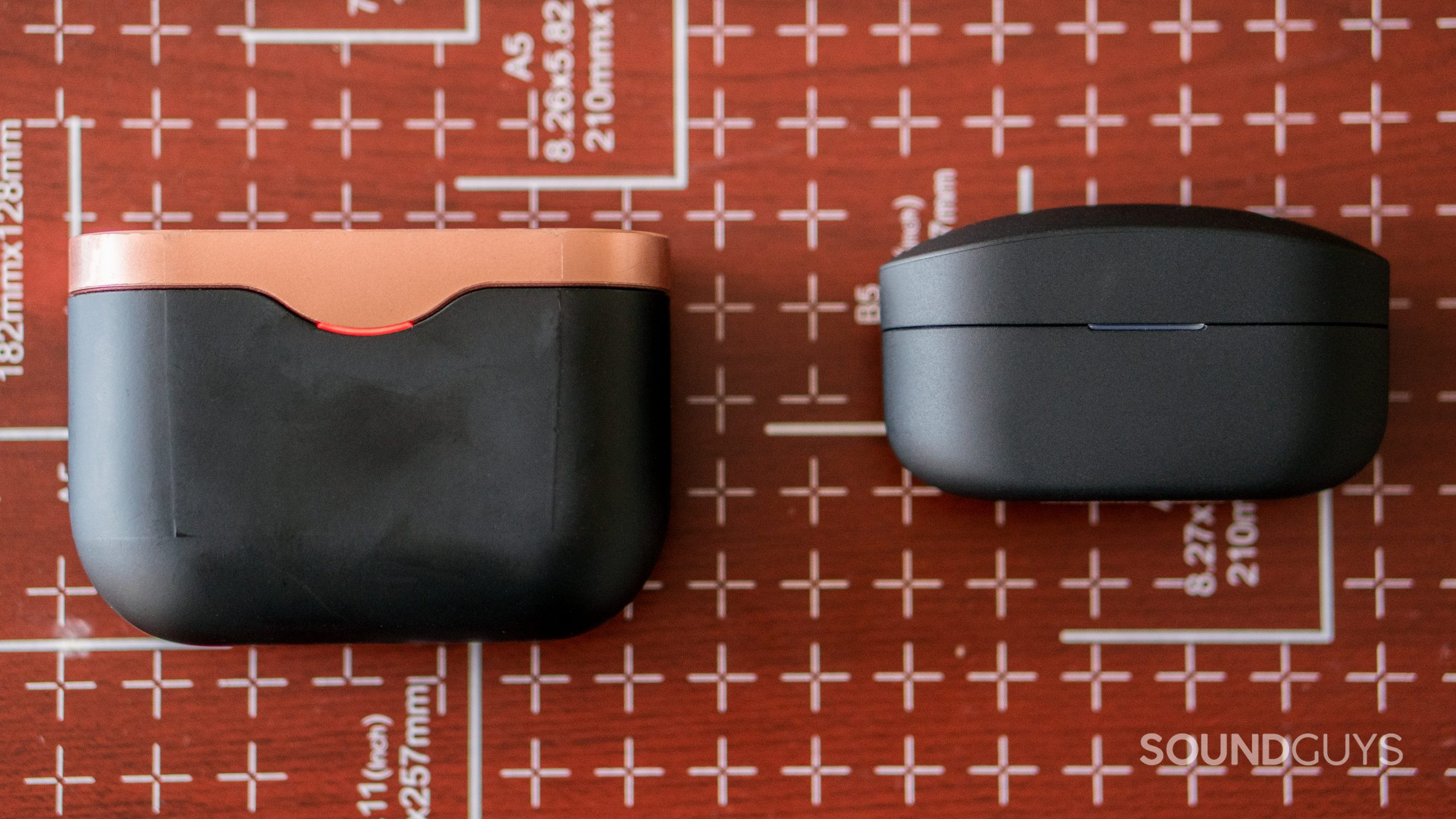
To be clear, true wireless earbuds aren’t built to last for years on end. You’re lucky if you eke out more than two years of daily use. Since the battery cells are so small, they degrade much faster than the larger batteries found in Bluetooth headphones. Compound the physical size limitations with the constant charge-deplete cycles we subject them to, and you have a short-lived product.
Apple slows down the degradation process with its battery optimization software, which prevents the case from charging the earbuds beyond 80% until you’re ready to listen to music. Once again, this is exclusive to Apple devices, and it takes some time for iOS to learn your usage habits. Die-hard environmentalists should just stick to wired earbuds and headphones with replaceable parts.
Do the AirPods Pro (1st generation) or Sony WF-1000XM4 have better noise canceling?
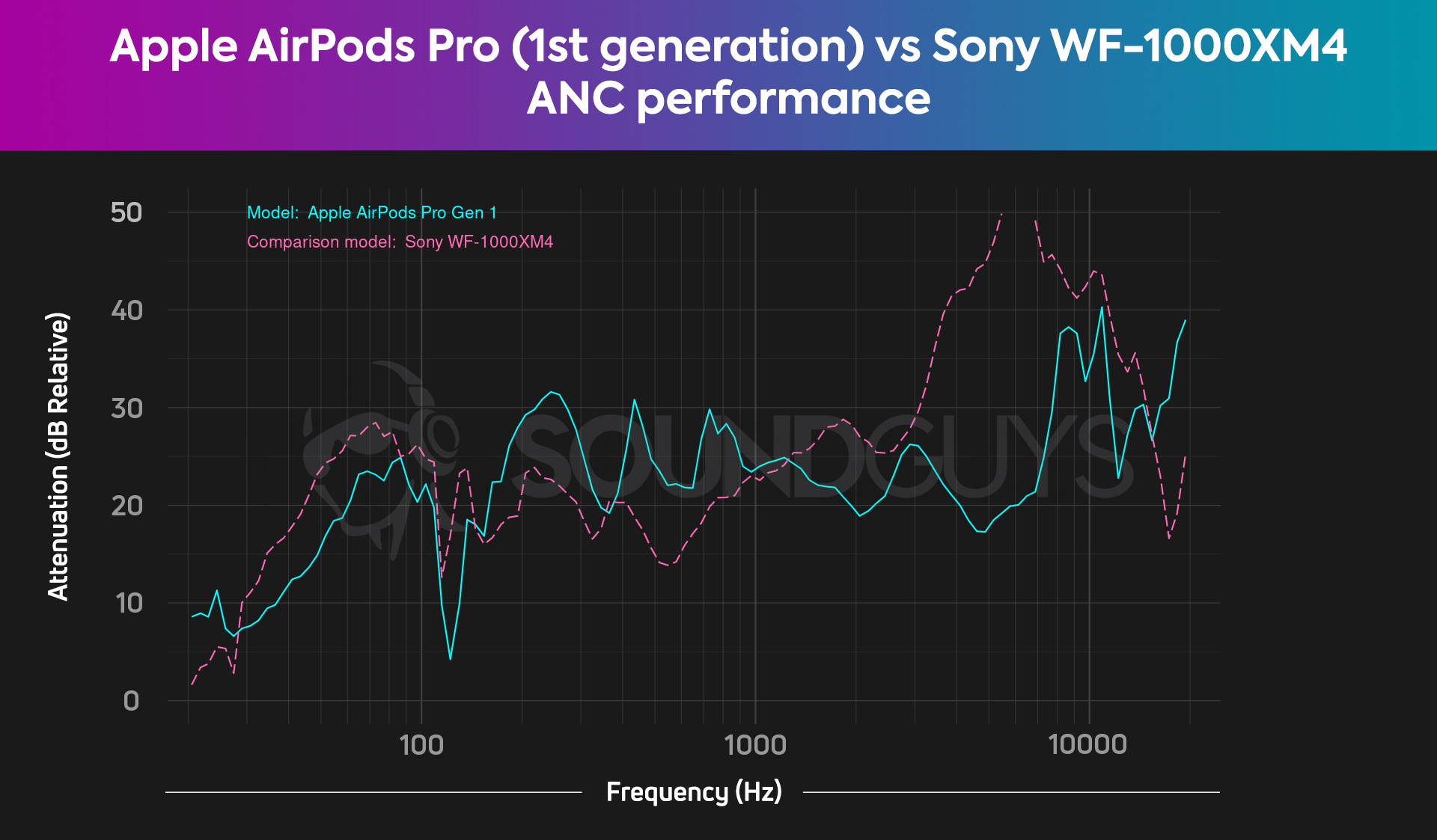
The Sony WF-1000XM4 have slightly better low-frequency noise canceling (below 150Hz) than the AirPods Pro (1st generation). However, Apple’s buds do more to cancel out low and midrange frequencies from 150-1000Hz. Both are very good, but you may actually find the older AirPods Pro make more of a difference during your morning commute.
That being said, the Sony WF-1000XM4 have stellar treble attenuation due to their memory foam ear tips. Generally, active noise canceling technology can’t do much to affect incidental noises (1kHz and above). Ear tips that seal to your ear canals are the best way to isolate you from unpredictable noise. You won’t hear nearby conversations or unpredictable sounds like clanging dishware in your favorite coffee shop when wearing the WF-1000XM4.
Both headsets may reduce your chances of falling prey to noise-induced hearing loss, as ANC makes it less likely for listeners to crank up the volume to dangerous levels to combat background noise.
Do the AirPods Pro (1st generation) or Sony WF-1000XM4 sound better?
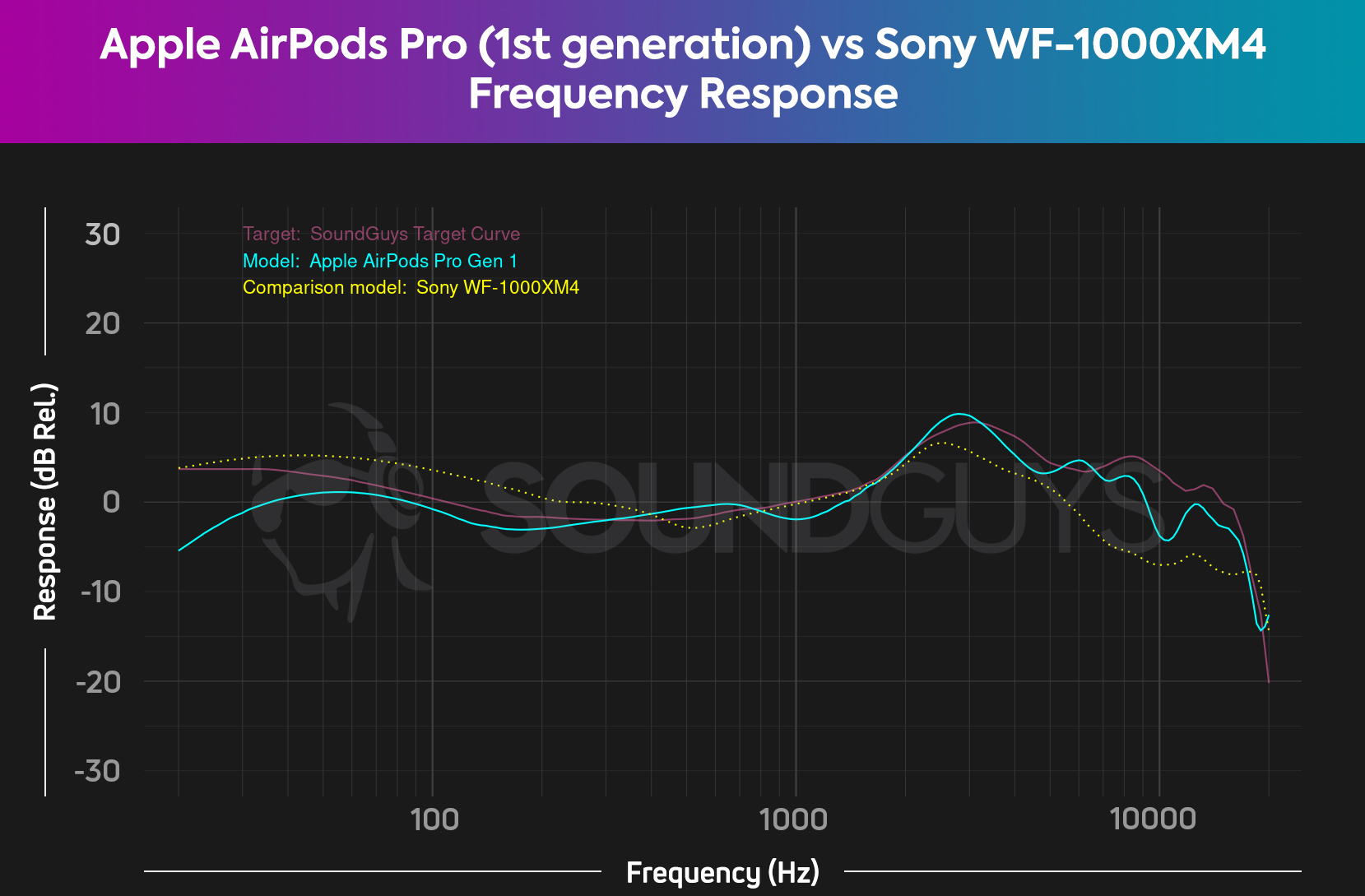
By default, the Sony WF-1000XM4 is bass-heavy, but not staggeringly so. Notes all the way up to middle-C sound a bit louder than the audio mixers intended. While this may be pleasing to pop and rap fans, those who enjoy more vocal-oriented stylings may notice the loud bass response makes it difficult to hear higher-pitched instruments. In other words, it might seem like detail is missing from your favorite songs. You can quickly remedy this by lowering the bass and midrange response in the graphical EQ.
The AirPods Pro default frequency response is a touch better for a range of music genres. This aligns with Apple’s design philosophy—you don’t need to tinker for it to work well. The sound profile more closely aligns with our house curve (pink), which is most noticeable with treble frequencies. Bass notes sound quieter than most consumers like, but this volume reduction is hard to notice. The tempered bass response benefits midrange frequencies that come through clearly; this is where the most important musical notes lie.
Most listeners will enjoy the sound from either set of earbuds, but only Sony lets you adjust the frequency response.
Which earbuds have the better microphone?
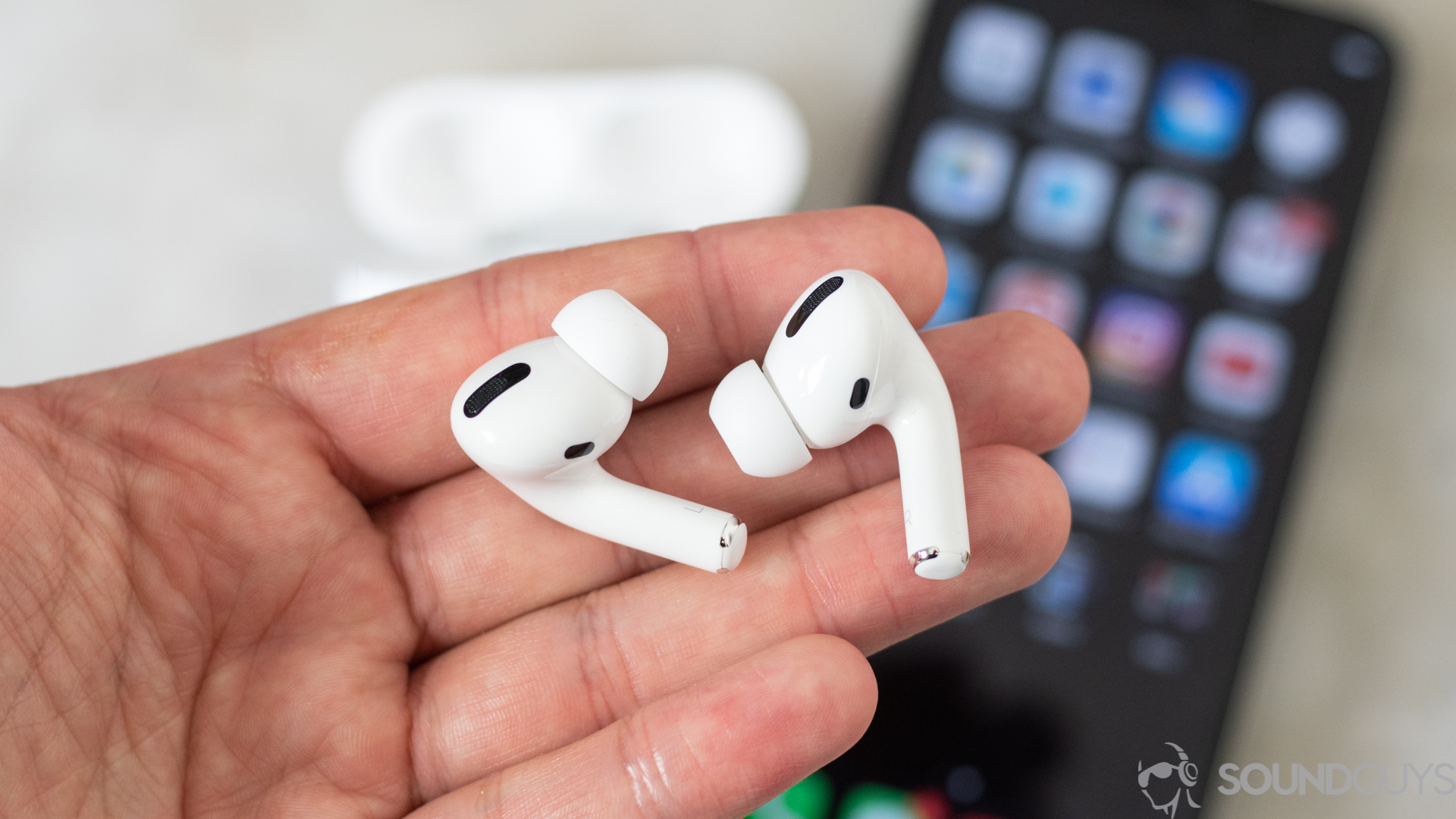
Both microphones are fine for professional and personal phone calls, but neither sounds as good as an external boom mic or dedicated desktop microphone. Still, they each have wind-reduction technology. You can also choose which earbud microphone the headset defaults to or leave it on auto.
Take a listen below and let us know what you think sounds best.
AirPods Pro (1st generation) microphone demo (Ideal conditions):
AirPods Pro (1st generation) microphone demo (Office conditions):
Sony WF-1000XM4 microphone demo (Ideal conditions):
Sony WF-1000XM4 microphone demo (Office conditions):
Which microphone do you think sound better?
Apple AirPods Pro (1st generation) vs Sony WF-1000XM4: Which should you get?
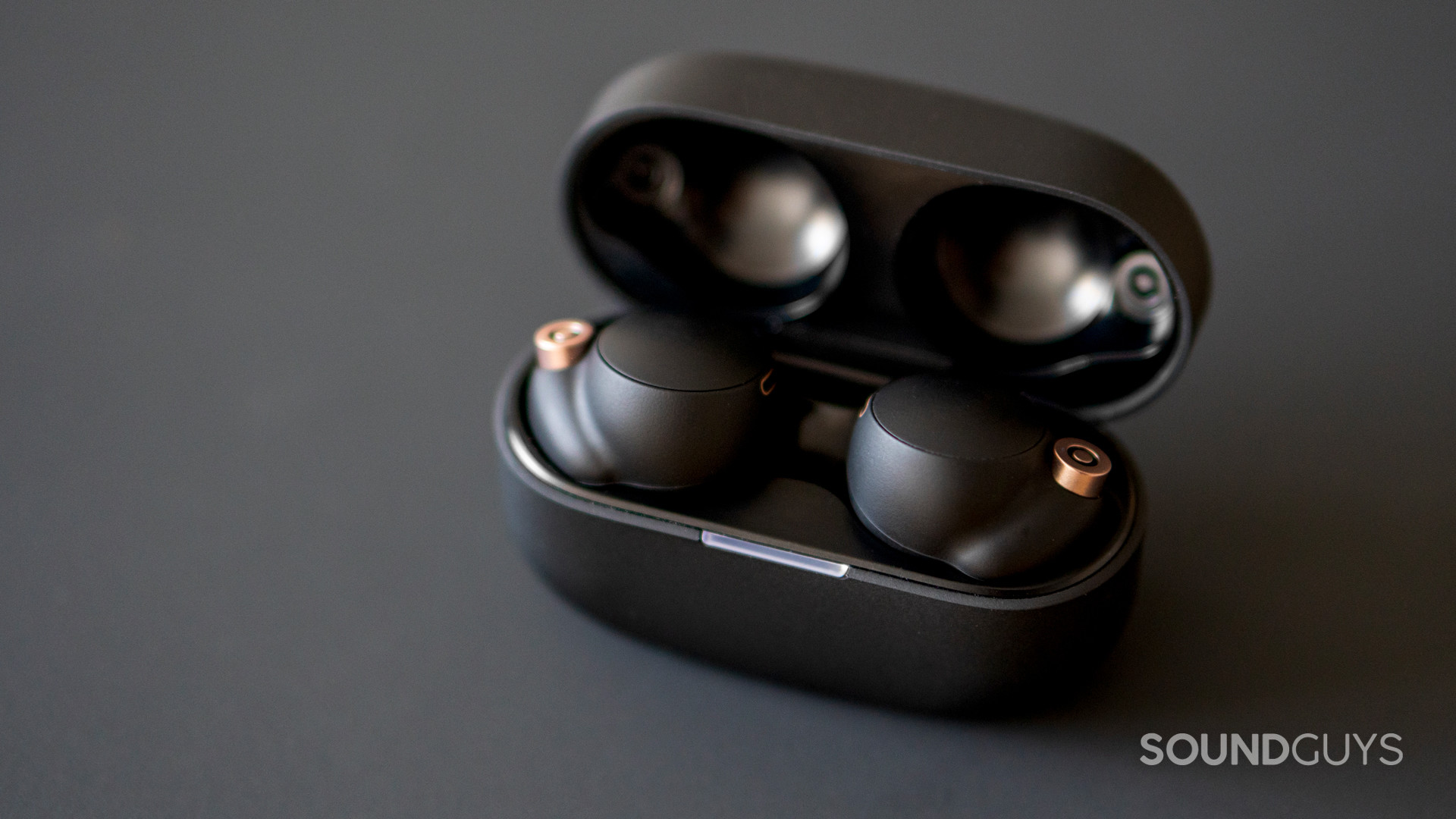
One factor we’ve yet to touch on is availability. The Apple AirPods Pro (1st generation) are discontinued now that the AirPods Pro (2nd generation) are widely available. Similarly, the Sony WF-1000XM4 have now been replaced by the Sony WF-1000XM5.
Sony has no loyalty to one mobile OS over another, making it a much more accessible product. If you don’t own an iPhone, the Sony WF-1000XM4 just makes more sense: you get more customization options, a better fit, and significantly better battery life. All of that is also true on iOS, but there are plenty of reasons iPhone owners will continue to purchase the AirPods Pro.
While Apple’s ecosystem is as loathed as it is loved, the fact that nearly anyone can pick up the AirPods Pro and go is impressive and attractive. Yes, you have far fewer customization options, but those who often experience analysis paralysis may appreciate the limited choices. Plus, the AirPods Pro sound great and, at the very least, is a far better option than the standard AirPods.

Perfect for iPhones
Deep Apple integration

What are some alternatives to the Apple AirPods Pro (1st generation) and Sony WF-1000XM4?
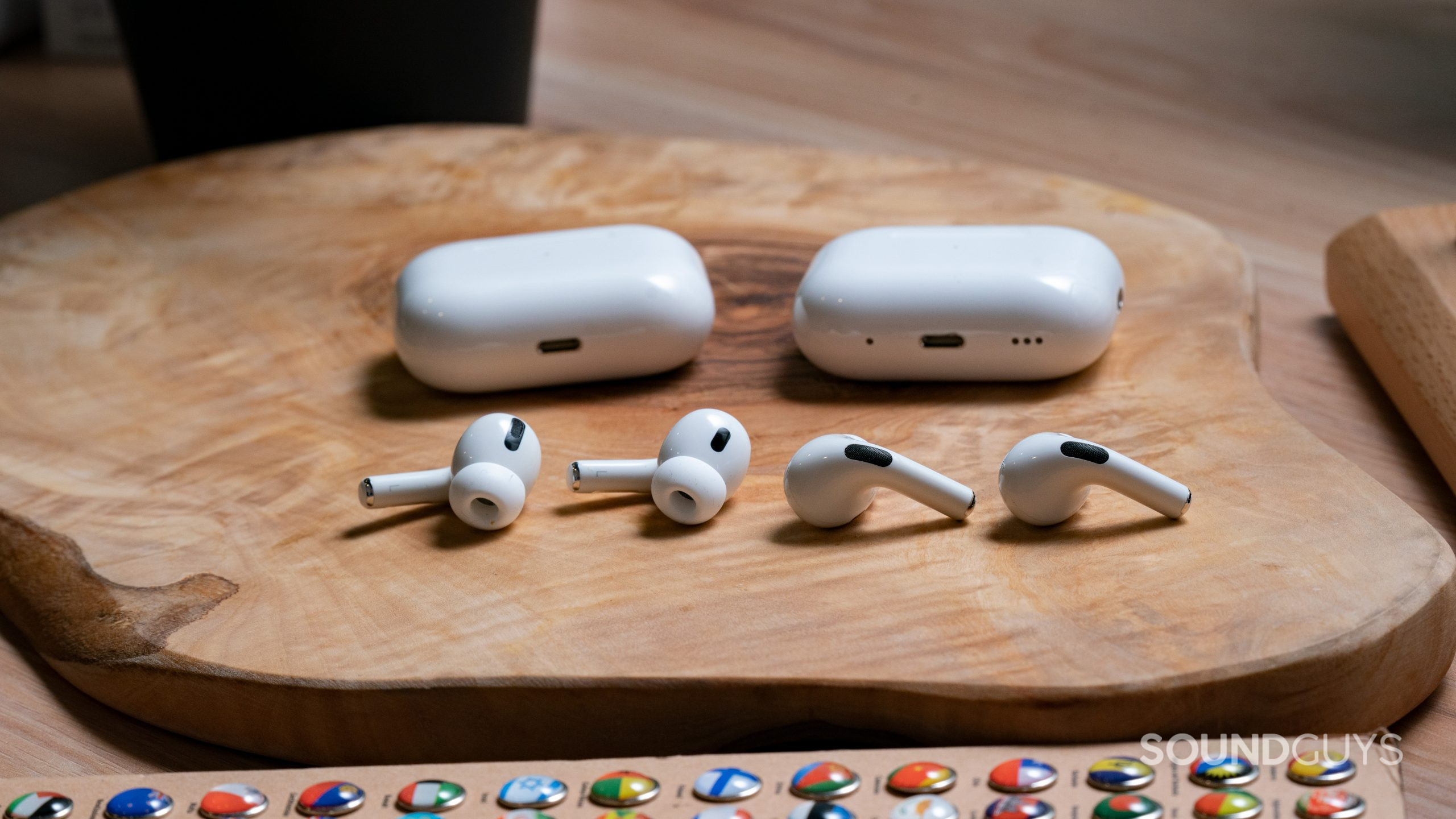
There are a lot of great true wireless earbuds out there to choose from, but here are some of our best alternatives to the AirPods Pro and Sony WF-1000XM4.
Apple recently updated the AirPods Pro with the new AirPods Pro (2nd generation) ($199.99 at Amazon), which improve ANC performance a bit. The new AirPods Pro also have a longer battery life and more touch controls on the earbud stems. There’s also a U1 chip in the case to improve locating your lost earbuds.
Another iOS option are the Beats Fit Pro ($159 at Amazon), which have stabilizing wings to keep them in your ears. These buds also have an H1 chip, so you can use features like Apple’s Spatial Audio or Find My. If you want to hop between Android and iOS, check out the Beats Studio Buds Plus ($169 at Amazon). These work with Google and Apple’s features. You even get audio switching across Android devices with the Studio Buds Plus.
If you have a Samsung phone, you might like the Samsung Galaxy Buds 2 Pro ($179 at Amazon). These have stellar ANC and great sound quality. The buds are IPX7 water-resistant, too. These integrate really well with Samsung devices, so they’re a good choice if you plan on sticking with a Samsung device for a while.
Another good Android-specific option are the Google Pixel Buds Pro ($199 at Amazon,), which has really good ANC performance, and the case is IPX2 rated alongside the IPX4 earbuds.
Frequently asked questions about the Apple AirPods Pro and Sony WF-1000XM4
Yes, both sets of earbuds support mono listening with only a single earbud. Simply leave one earbud in its charging case, and you can use the other one as normal.
Check out our full breakdown comparing the Sony WF-1000XM4 vs the Sony WF-1000XM5. The newer model is more comfortable with improved noise canceling and new features such as head tracking.
Thank you for being part of our community. Read our Comment Policy before posting.